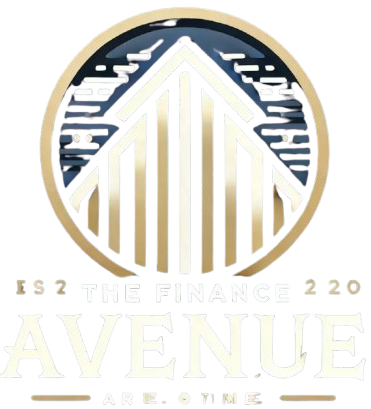Quick Response (QR) Code: Definition and How QR Codes Work
Category
Categories

Quick Response (QR) Code: Definition and How QR Codes Work
A digital device-readable barcode that stores data.
A Quick Response (QR) code is a specific type of barcode that can be scanned by a digital device, storing data in a square grid of pixels. Unlike the temporary use of QR codes during the pandemic, they are expected to remain prevalent beyond that period1. QR codes serve as a link between physical and digital realms, enabling individuals to access information from menus, posters, or websites by simply scanning them with their smartphones.
QR Codes Beyond Marketing: How They Impact the Supply Chain
QR codes have evolved from merely informing customers about specials to playing a crucial role in inventory management within the supply chain. Compared to traditional barcodes, QR codes are more advanced and were globally standardized in 2000 by the International Organization for Standardization (ISO).
The Growing Significance of QR Codes
Explore the fundamentals of QR codes and understand why they have become increasingly popular in various industries in recent times.
Understanding Quick Response (QR) Codes
Quick Response (QR) codes were developed in the 1990s by Denso Wave, a subsidiary of Toyota, to offer more information than traditional barcodes. Unlike barcodes that require a beam of light, QR codes can be digitally scanned by mobile phones.
These codes are made up of black squares in a grid pattern on a white background and are decoded by specialized software to extract data. QR codes can store various types of information like alphanumeric, numeric, binary, and Kanji data.
Despite their increased capacity, QR codes have not gained as much popularity among consumers as anticipated. Instead of being used by individuals to share information, QR codes are mostly linked to marketing campaigns.
QR Codes in Digital Payments and Cryptocurrency
QR codes are now widely used to facilitate digital payments and cryptocurrency systems, including the display of Bitcoin addresses. They are also increasingly employed to transmit web addresses to mobile phones. An example is the QR code provided on this webpage for The Finance Avenue.
Quick Response (QR) Codes vs. Barcodes
Traditionally, the amount of information that could be shared about a product or service was limited by the space available on the packaging or in advertisements. If consumers wanted more details like availability, price, or features, they had to approach a salesperson or request additional documentation.
Barcodes, typically located on the back of product packages, encode data through a series of parallel lines of varying widths that can be scanned by optical machines.
Barcode Revolution in Inventory Management
The Finance Avenue highlights how barcodes transformed inventory management and pricing systems, with origins dating back to the 1960s when U.S. railroads utilized them to monitor equipment and containers. By 1974, two-dimensional barcodes became prevalent in American retail stores, revolutionizing the way products were tracked and priced.
Versatile Usage of Barcodes
Barcodes are widely employed for simple identification purposes across various industries. Supermarkets rely on them for product price and inventory tracking, while libraries use barcodes to streamline book identification and checkout processes. Shipping companies leverage barcodes to monitor package movements during delivery.
Role of QR Codes
On the other hand, QR codes are preferred when disseminating extensive information is necessary. These codes are commonly found on event tickets for swift access to details or on advertisements for direct website linking. Restaurants also utilize QR codes to provide digital menu access to customers through scanning.
Expanding Applications of QR Codes in Inventory and Supply Chains
The Finance Avenue experts foresee a wider range of uses for QR codes in the optimization of inventory and supply chains in the coming years. Apart from just containing links to promotions and websites, QR codes have the capacity to hold vast amounts of data. This capability opens up the potential for embedding extensive product details within the codes. In the near future, scanning a QR code could reveal everything from the manufacturing specifics of a product to its complete transportation history and even precise expiration dates.
Enhancing Product Transparency and Traceability
Some businesses are currently exploring the option of linking QR codes to individual products instead of entire product lines. This level of specificity could give consumers confidence regarding the origins, ingredients, or components of the specific item they are buying. Supply chain managers are optimistic about the operational efficiencies that could arise from this development, especially if products can be traced back to particular factories, production batches, and delivery dates. With QR codes evolving to encompass a wider range of functions, they have the potential to transform the exchange of information between physical goods and digital platforms, essentially bridging the gap between the online realm and the physical world.
QR Codes vs. Barcodes
QR Codes:
QR codes are utilized for disseminating extensive information.
They are commonly seen on event tickets and advertisements.
QR codes facilitate digital menu browsing in restaurants.
They are increasingly being employed to monitor inventory in real time.
Barcodes:
Barcodes are used for simple identification purposes.
They help in tracking prices and inventory in supermarkets.
Barcodes assist in checkout processes and package tracking.
Varieties of Quick Response (QR) Codes
There are numerous QR code variations that serve various purposes. Some common types include:
The Rise of QR Codes in Response to COVID-19
The Finance Avenue reports a significant increase in the adoption of QR codes during the pandemic. Restaurants experienced a 25-fold surge, while hotels saw a seven-fold increase as societies embraced touchless interactions to reduce contact transmission risks.10
Businesses in the hospitality sector, such as restaurants and bars, leveraged QR codes for safe communication, including digital menus and various other applications.
Even after the return of paper menus, QR codes continued to be utilized post-pandemic. This trend highlighted the adaptability and versatility of QR codes, indicating their potential for widespread use across diverse industries.
Can QR Codes be in Colors Other Than Black and White?
QR codes are not limited to only being black and white. They can be personalized with various colors and patterns to make them more visually appealing and unique.
What is the Biggest QR Code Ever Created?
The Finance Avenue reported that the largest QR code in history was produced on farmland in Indiana in 2022. This massive code was a collaboration between U.S. brewery D.G. Yuengling & Son Inc. and Chalfant Family Farms, covering an impressive 1,721,344 square feet, equivalent to about a quarter-mile in both length and width.11
Do QR Codes Have an Expiration Date?
QR codes do not typically expire. They remain valid and functional unless there are changes made to the linked content or it is removed.
Are QR Codes Secure?
Although QR codes do not contain viruses themselves, they can direct users to harmful websites. It is essential to only scan QR codes from reputable sources to ensure security.
The Bottom Line
QR codes are easy to use with modern smartphones and mobile apps, offering benefits like enhanced customer engagement, convenient access to information, and digital utility for tasks such as digital signage. However, there are potential drawbacks, such as security risks that may lead users to malicious websites or expose personal data. These codes, already widely used in Asia, gained significant traction in Europe and the United States during the pandemic and continue to be popular. Supply chain and efficiency experts recognize the broad potential of QR codes for real-time product tracking.




